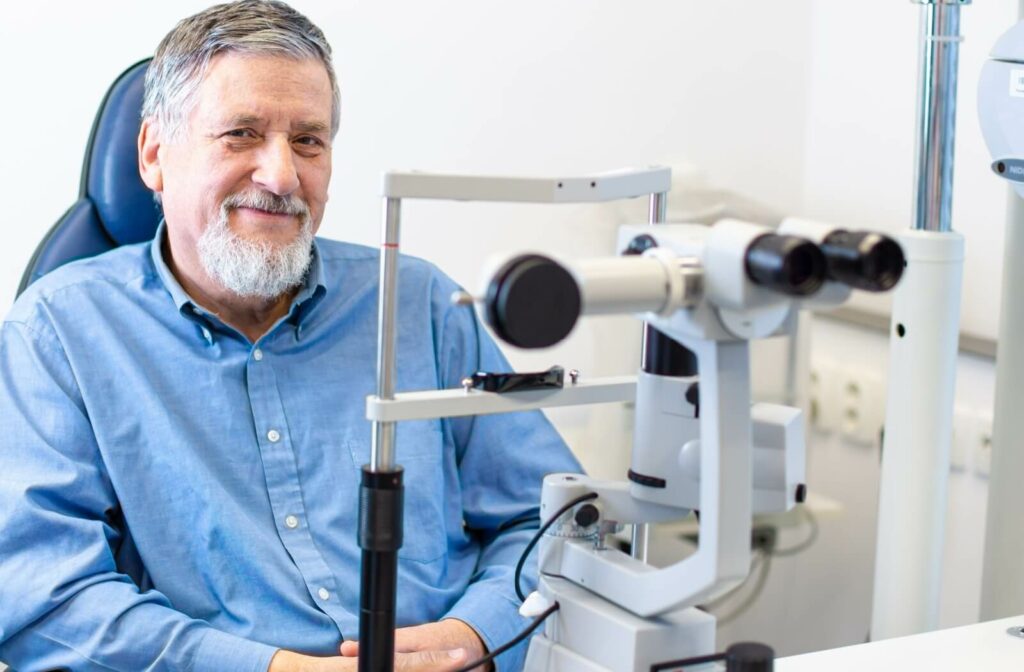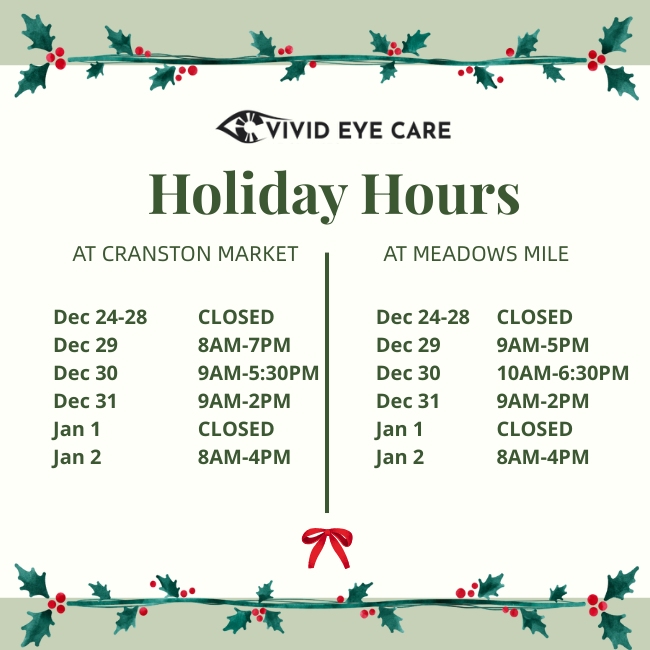As you age, it’s natural to notice changes in your vision. Reading small print might feel harder, or you may find yourself needing more light to see clearly. While some of these shifts are expected, others could point to more serious eye health concerns. This is why regular eye exams are so important—identifying problems early can help you protect your sight.
Your eyesight may be changing because of common age-related issues like difficulty focusing, cloudy lenses, retinal deterioration, or optic nerve damage. These changes are often linked to conditions such as presbyopia, cataracts, macular degeneration, or glaucoma—each of which can affect your vision in unique ways over time.
Are Vision Changes Normal with Age?
It’s common for your vision to change over time. Just like the rest of your body, your eyes experience natural wear and tear as you age. While not all changes are serious, it’s important to understand which ones are typical and which may need attention.
Some age-related changes are subtle, like slightly worsening eyesight. But others—such as certain eye conditions—can significantly impact your vision and long-term eye health.
Here are some possible issues you’ll want to look out for:
Presbyopia & Refractive Errors
Presbyopia is a natural, age-related vision change that affects your ability to focus on close-up objects. It’s caused by the gradual stiffening of the eye’s lens and usually becomes noticeable in your 40s.
You might have presbyopia if you experience:
- Difficulty reading small print (books, menus, or labels)
- The need to hold reading materials farther away
- Eye strain or headaches when reading
- Blurry vision at normal reading distances
The good news is that presbyopia is highly manageable with prescription reading glasses, bifocals, or multifocal contact lenses. An optometrist can recommend treatment options based on your lifestyle and visual needs.
If you already have refractive errors like myopia (nearsightedness) or hyperopia (farsightedness), it’s also common for your prescription to change with age. These conditions are caused by the shape of the cornea or eyeball and are often diagnosed in childhood or early adulthood.
If you’re noticing more frequent changes in your vision, book an eye exam. Your optometrist can update your prescription and assess whether you’re a candidate for possible treatments like laser eye surgery.
Cataracts
Inside each eye is a clear lens that focuses light onto the retina. Over time, this lens becomes cloudy, causing cataracts. Cataracts distort the way light enters the eye, leading to blurry or faded vision.
Signs of cataracts may include:
- Blurred or dimmed vision
- Increased difficulty seeing at night
- Halos around lights
- Yellowing or dulling of colours
Although cataracts can impact daily life, they are treatable. Cataract surgery is a safe, routine procedure that replaces the clouded lens with a clear artificial one, restoring clearer vision for most patients.
Glaucoma
Glaucoma refers to a group of eye diseases that damage the optic nerve—often due to elevated pressure inside the eye. This condition tends to develop slowly and without early symptoms, making regular eye exams critical.
Types of glaucoma include:
- Open-angle glaucoma (the most common type, with gradual progression)
- Angle-closure glaucoma (less common, but a medical emergency)
- Normal-tension glaucoma (damages the optic nerve despite normal intraocular pressure)
- Secondary glaucoma (caused by another eye issue or injury)
Because glaucoma often goes unnoticed until permanent vision loss occurs, early detection is key. We can monitor your eye pressure and the health of your optic nerve during routine eye exams.

Age-Related Macular Degeneration (AMD)
AMD affects the macula—the central part of the retina responsible for sharp, straight-ahead vision. It can interfere with reading, driving, facial recognition, and seeing fine detail.
There are 2 main types of AMD:
- Dry AMD: The more common type. It progresses slowly and leads to gradual central vision loss.
- Wet AMD: Less common but more aggressive. It involves abnormal blood vessel growth under the retina, which can cause rapid vision loss without treatment.
There’s currently no cure for AMD, but early diagnosis and lifestyle changes—like a healthy diet and not smoking—can help slow its progression.
When to Visit Your Optometrist
Some vision changes are a normal part of aging, but others may signal a more serious issue. If you experience sudden or severe vision loss, persistent blurriness even with corrective lenses, or eye pain accompanied by redness or swelling, it’s important to seek professional care.
Frequent prescription changes or noticing flashes of light, floaters, or sudden spots in your vision can also indicate underlying conditions that require attention. Your optometrist can help determine whether these changes are typical or something more serious—and work with you to create a personalized plan to protect your long-term eye health.
Protect Your Vision with Expert Eye Care
Changes to your vision can be unsettling, but understanding what’s normal—and what’s not—can help you take control of your eye health. Many age-related eye conditions can be managed effectively when caught early through routine exams and personalized care.
At Vivid Eye Care, we’re here to support your eyes at every stage of life. If you’ve noticed changes to your vision or simply haven’t had an eye exam in a while, now’s the time. Book your appointment today and let our friendly, experienced team help you see clearly and confidently.






















